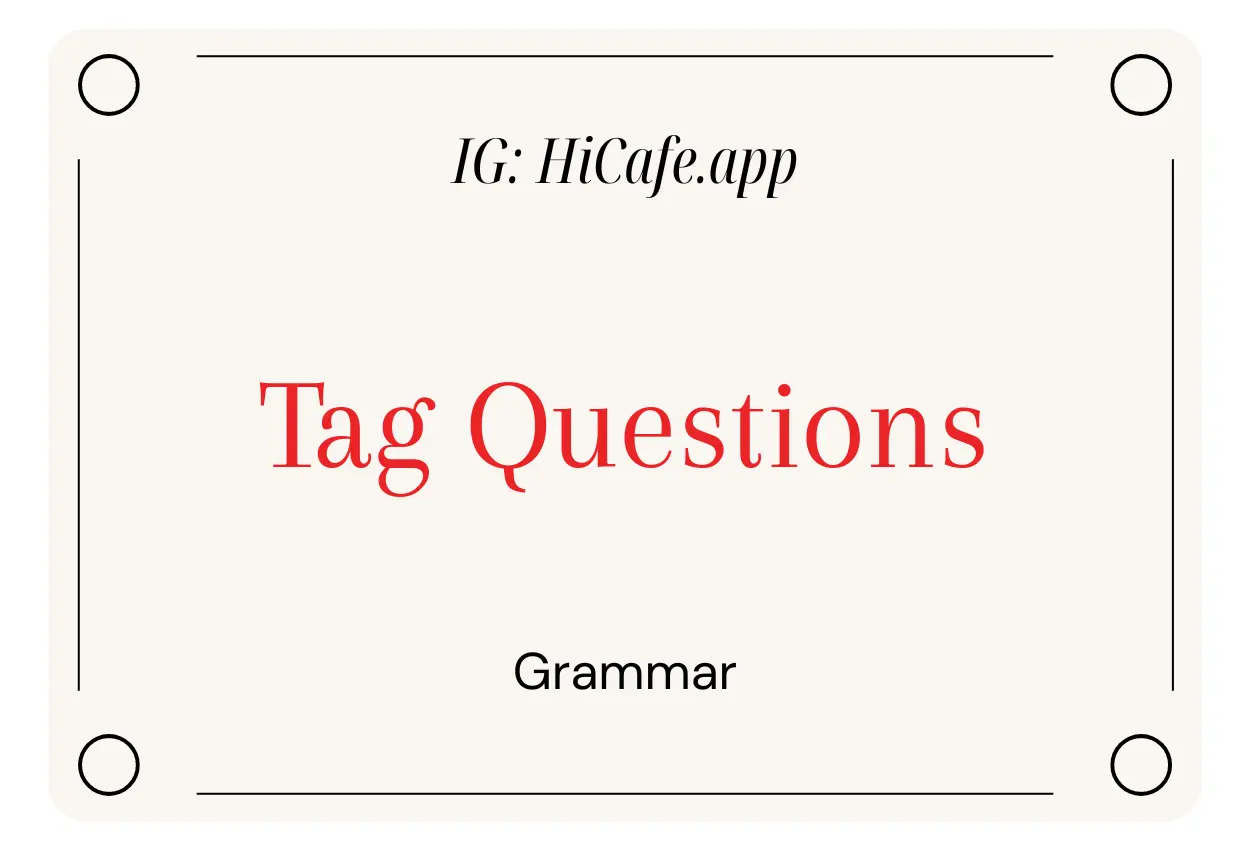Grammar Level 6- Lesson Nineteen- Tag Questions Grammar
In this grammar lesson, you learn about Tag Questions Grammar in English and how to use tag questions in your English conversation and writing. Just follow examples of tag questions and write them down a few times to learn them very well. After finishing this lesson, you should work on its quiz.
Grammar Recap
In our previous lesson, we covered the Still and Anymore Grammar If you just landed on this page, we suggest that you complete our previous lesson including its quizzes before continuing on this lesson.
Requirement Lessons
There is no required lessons for working and learning this lesson.
Examples of Tag Questions
A tag question starts out as a statement and then becomes a question at the end. There are different reasons for using tag questions, but usually it’s because you have an idea of what the answer might be.
Examples:
You want to learn English, don’t you?
We’ve had some really good weather, haven’t we?
She can help you with your homework, can’t she?
Notice the subject is repeated at the end of the question, and the helping verb (auxiliary verb) is used to reinforce the tense of the verb.
The first question is in the present tense; therefore, use “do” as the helping verb. In this question, I know you want to learn English:
You want to learn English, don’t you?
The second question is in the present perfect; therefore, use “have” as the helping verb. Remember that your choice of helping verb sometimes depends on the subject. In this question, we both know that the weather has been great:
We’ve had some really nice weather, haven’t we?
How about a question in which “he” is the subject and there’s a contraction:
He’s made a lot of friends in school, hasn’t he?
The third question uses a modal verb, “can,” so you simply make it negative before the subject. In this question, I think the person can help you, but I might not be sure:
She can help you with your homework, can’t she?
Tag questions can start out in the negative and then end in the affirmative:
It hasn’t been a very good day, has it?
They don’t like to eat different kinds of food, do they?
You wouldn’t do that, would you?
Here are some more examples:
She’s very beautiful, isn’t she?
(We all agree that this is a beautiful woman.)
The baby doesn’t want to eat her food, does she?
(It’s obvious that this baby isn’t going to eat.)
She’s done something really interesting to her hair, hasn’t she?
(Dying your hair purple is interesting–although you may or may not like it. I like it, but you might not like it. However, I want you to agree with me.)
Quiz for Tag Questions
Now that you learned your new lesson, it is time to go to the Tag Questions page and finish your quiz. While working on your quiz, you can always go back to its lesson to refresh your memory.
Private Lessons in English
If you need help with quizzes of this lesson, you can hire one of our expert private English teachers by going to our Private English Tutoring page and submit a request. When submitting your request, make sure to mention the grammar level and lesson number.
Next Grammar Lesson
In our next lesson, we will cover the Embedded Questions Grammar Before moving to the next lesson, we suggest that you complete this lesson including its quizzes.
Related Grammar Lessons
None
Grammar Level 6 Outline
If you wish to explore all lessons that are covered in HiCafe Grammar Level 6, you can visit the Grammar Level 6 Outline page.
Practice English Grammar Skills
For a comprehensive practice of English grammar with quizzes, you can visit the Improve English Grammar Skills page to view HiCafe 250 grammar lessons in 7 levels plus prepositions and pronouns.



